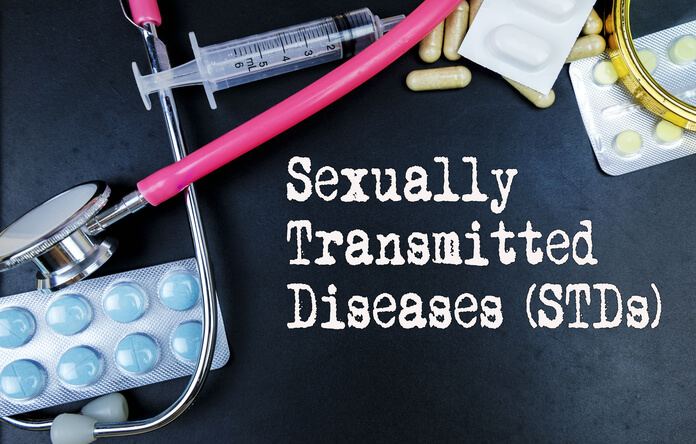What are Sexually Transmitted Infections?
Sexually transmitted infections (STIs) are diseases that spread by means of sexual contact. About half of the 100 new STIs identified are reported in adolescents and young people below 24 years. STIs can be very dangerous and take a toll on the health of young people. Unfortunately, severe consequences may involve reproductive health, i.e., tubal infertility, troubled pregnancies, etc. in females and AIDS in males. Behavioral factors causing STIs are unsafe sexual behavior, health care behavior, and drug abuse. Psychological factors such as self-esteem also affect STI diagnosis and treatment in the youngsters.

Common Types of STIs
Some of the common types of STIs you should be aware of include the following:
- HIV: Human Immunodeficiency Virus, or AIDS-causing agent, destroys the body’s immunity on having unprotected sex with an infected person, or using contaminated needles, or blood transfusion.
- HPV: Human Papilloma Virus is a common STI and seen as genital warts. HPV infection increases risk of cervical cancer in women. Pap tests can detect an HPV infection.
- Chlamydia: Chlamydial infections are characterized by abnormal genital or rectal discharge, burning sensation during urination, and rectal bleeding. In women, it can cause low belly ache and may lead to another disorder called pelvic inflammatory disease (PID). In men, we find urinary problems.
- Gonorrhoea: It causes painful urination or bowel movements, and may even lead to PID, ectopic pregnancy, and infertility in women.
- PID: This STI occurs in reproductive organs due to chlamydia or gonorrhoea. It causes infection of reproductive organs, thus leading to female infertility.
- Genital herpes: This STI is caused by herpes simplex virus (HSV) and manifests itself as a burning sensation which develops into painful sores in the vaginal or rectal area. Treatment is possible but relapses are common.
- Syphilis: Syphilis is a painless open sore or a rash around sexual organs in men and women. Untreated syphilis may lead to heart and nervous system disorders over time.
Other STIs include bacterial vaginosis, chancroid, Cytomegalovirus infections, donovanosis), pubic lice, trichomoniasis, scabies, etc.
Protection from STIs
There are several safety measures one should follow to ensure they are protected from STIs:
- Stay mutually monogamous with an uninfected partner
- Use a male latex or female polyurethane condom, even for oral sex.
- Reduce chances of getting HIV infections with preventive steps:
- PEP (post-exposure prophylaxis). Take HIV preventive medication within 72 hours of sexual contact.
- PrEP (pre-exposure prophylaxis). Follow strict medication regularly to prevent any HIV infection from sexual contact in future.
- Have regular medical examination for HIV and STIs.
- Avoid sexual contact with somebody who is HIV-positive, and make sure that the other person is taking their HIV medicines.
- Be aware of the symptoms of STIs and seek immediate medical help if any symptoms occur.
- Avoid douche as it reduces the pH of vaginal area making you more prone to infection.
Screening for STIs is very important in sexually active youngsters. Many of the STIs can be successfully cured with antibiotics. Some STIs, such as herpes, can’t be cured completely and may reoccur, which is preventable. Keeping a watch on your health and being aware of the symptoms can be a great help in treatment.


